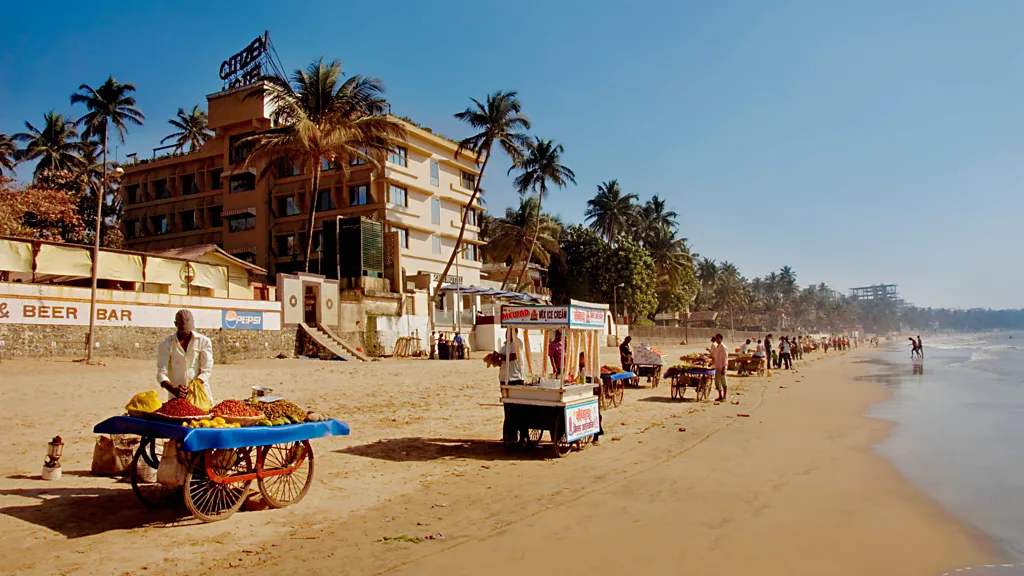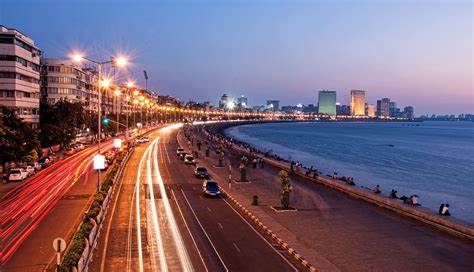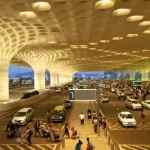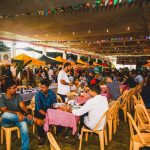Have you ever found yourself wondering what about Mumbai makes it the city of dreams for tourists? Mumbai combines modernism, history, and culture in a way that incorporates less-known gems as well as famous sites. Whether you are a first-time visitor or a seasoned traveler, this guide will take you through the top ten tourist attractions in Mumbai that you definitely must see together with offering you practical travel advice to make sure your stay will be one you will never forget.
1. The Gateway of India
Furthermore, the Gateway of India reflects Mumbai’s colonial legacy and great history rather than only a monument. Built in 1924 to honor King George V’s visit, this amazing bridge provides an amazing perspective of the Arabian Sea and a great base from which to start your trip across Mumbai.
First get a local train to the Chhatrapati Shivaji Maharaj Terminus (CSMT), and from there you might ride an auto-rickshaw or a taxi.
From every point in South Mumbai, the cab or Uber service offers handy access.
Early in the morning or late in the evening is the best times to visit if you want to avoid throngs and maximize the cool breeze.
Expect street vendors to provide a range of products, including gifts and food.
There are boat trips to the Elephanta Caves right next by.
Although admission is free, a boat ride runs from 200 to 500 Indian Rupees (INR) per person.
2. Chhatrapati Shivaji Maharaj Terminus (CSMT)
The CSMT, noted as a UNESCO World Heritage Site, features exquisite specimens of Victorian Gothic architecture. Apart from its purpose as a hub for transit, this congested rail station is also a historical site.
CSMT is a major Central Line stop; how to get there: via local train. Situated in the city’s center.
The place is handy in South Mumbai; Uber or a taxi would get you there.
If you like to visit the building lit by natural light, late afternoon is the best time to do it.
What to Expect: Free admission; while guided tours are provided for a charge; commuters and guests mix here.
3. Marine Drive
Comprising 3.6 km of promenade along the Arabian Sea, Marine Drive is Its curved appearance and amazing lighting that highlight it at night have earned it sometimes the nickname “Queen’s Necklace”. This is the ideal place for anyone who wish to stroll slowly or enjoy the city skyline.
If you are taking a train, Churchgate is the closest station; you will then have to walk a small distance.
From most of the city, it is easy to reach when using a cab or Uber.
Early in the morning, visit the spot for a leisurely walk; later on, go to see the sun set. These are the opportune seasons to visit.
One should expect the following: street vendors offer food and chai.
Although entrance is free, guests are urged to bring cash for snacks and drinks.
4. Elephanta boasts
These prehistoric rock-cut tunnels on Elephanta Island have been recognized as a UNESCO World Heritage Site. They are reflections of India’s rich cultural legacy. Within the tunnels, which belonged to Lord Shiva and were dedicated to him, are exquisite carvings and sculptures.
By ferry leaving the Gateway of India, it will take you roughly one hour to get there.
For adults it will cost INR 600; for children INR 300.
The best time to visit early in the morning is so you may escape the heat and crowds.
This is what you may expect: the ferry is not far from the caverns.
Guides cost between 500 to 1000 Indian Rupees for hire.
5. Juhu Beach comes in fifth

Juhu Beach is regarded to be among Mumbai’s most well-known beaches for a number of reasons. Its vivid environment, street food, and amazing sunsets are well known. Not only are locals fond of this spot, but also visitors.
Should you be riding a train, Andheri is the closest station; subsequently, you will have to pay a little taxi trip to get yourself there.
From most of the city, it is easy to reach when using a cab or Uber.
The evening is the ideal visit time since it provides the best street food and views of the sunset.
You should try some of the neighborhood street cuisine, including bhel puri and pani puri. The surroundings are packed and energetic.
6. Siddhivinayak Temple
Dedated to the worship of Lord Ganesha, the Siddhivinayak Temple is among Mumbai’s most famous temples. In the center of the city’s thrills, it provides a spiritual refuge.
Getting There: Dadar is the closest station if you are on a train; you will then have to pay a quick taxi trip there.
From most of the city, it is easy to reach when using a cab or Uber.
Early in the morning or late in the evening is the best times to visit if you wish to avoid large crowds.
What to Expect: Though entrance is free, donations are asked and much valued.
Photography is quite forbidden inside the shrine’s borders.
7. the Bandra–Worli Sea Link
Comprising a cable-stayed bridge, the Bandra-Worli Sea Link is an engineering wonder providing amazing views of the Arabian Sea and the urban cityscape.
The best way to see the bridge is by taxi or Uber if you so wish. Here’s how to reach it.
Early in the morning or late in the evening is the best times to visit if you wish to enjoy amazing sights.
Automobile toll fees run from seventy to one hundred Indian Rupees (INR).
You should enjoy the surroundings from your car since pedestrians have no access here.
8. Colaba Causeway
Fashionable clothes, accessories, and souvenirs may be bought in the crowded street market Colaba Causeway.
If you are riding a train, CSMT is the closest station; after that, you will have to pay a quick taxi trip there.
From most of the city, it is easy to reach when using a cab or Uber.
Plan your journey depending on the best time to visit—late afternoon or early evening.
To receive the best bargains, you have to work really hard at negotiations.
Taste some of the street cuisine, including falooda and kebabs, now.
9. National Park Sanjay Gandhi
Leopards and deer abound in the large green paradise known as Sanjay Gandhi National Park, which is home of many other species. It’s the ideal spot to get away from city noise and bustle.
To reach there, first ride the rail to Borivali, the closest station, then pay a short distance taxi ride.
From most of the city’s neighborhoods, getting via cab or Uber is easy.
For a more leisureful experience, we advise arriving early in the morning. This would be the ideal visit timing.
What to expect: adults pay 58 Indian Rupees for entrance; children pay 28 Indian Rupees.
One might possibly go on safari rides and boating excursions.
10. the Haji Ali Dargah
On a small islet in the Arabian Sea is the magnificent mosque and mausoleum known as the Haji Ali Dargah. It welcomes people of many religions.
You can get there by first riding the train to the closest stop, Mahalaxmi, then walking a little distance from there.
From most of the city, it is easy to reach when using a cab or Uber.
Paying a visit would be best early in the morning or late in the evening.
What to Expect: While entrance is free, donations are asked and much valued.
The boardwalk is only accessible to stroll on during low tide.
What You Should Know – Local Customs
- Dress modestly, particularly for places of religion.
- Steer clear of crowded areas at peak hours if you wish to keep your possessions safe.
- Bring sunscreen, a comfortable pair of shoes, and a reusable water bottle. These constitute the packaging basics.
Mumbai is a city that never stops moving, hence the top 10 attractions featured here are only the start of your journey across the city.
Detailed schedule together with ideas for several cuisines.
Mumbai has enough to appeal to history buffs, foodies, environmentalists, and retail addicts among other things. Here in this section of the guide, we will go over how to plan your trip, where to discover the best eateries, and budget-friendly ideas to help you to savor Mumbai’s energetic surroundings without sacrificing anything.
Specific Advice for Travel Scheduling
Rounding up the first day are Marine Drive, the Colaba Causeway, and the Gateway of India.
You should get going in the morning at the Gateway of India. Arriving early would help you to avoid the traffic and obtain some amazing views of the monument and the Arabian Sea. One can take a ferry to reach the Elephanta Caves, which would take three to four hours.
Every half an hour between nine in the morning and two in the afternoon, ferries leave. The journey lasts one hour and each ticket runs between 200 and 500 Indian Rupees (INR).
Elephanta caverns Tip: Wearing comfortable shoes is crucial as the trip from the ferry to the caverns is somewhat short. Guides cost between 500 and 1000 Indian Rupees to hire.
For lunch and some afternoon shopping, head toward Colaba Causeway. While you are shopping for stylish clothes, accessories, and souvenirs with your companions, you should sample some of the local street cuisine such kebabs and falooda.
Regarding shopping, you should make effort to locate the top deals. Among the most often worn items are traditional Indian clothing, jewelry, and leather pursues.
One excellent method to relax at the end of the day is a slow walk along Marine Drive. Watch the sunset and enjoy the light wind coming from the water. Don’t pass over the chance to buy a street vendor’s cup of tea.
Touring the Elephanta Caves and the Chhatrapati Shivaji Maharaj Terminus (CSMT) will occupy day two.
You would have to take an early ferry from the Gateway of India to the Elephanta Caves. The remarkable workmanship found in the antique rock-cut temples will wow you when you tour them.
Highlights of the Cave: Not to be missed is the main cave, which features a gigantic Lord Shiva in his three-headed form (Trimurti).
It advised that you return to South Mumbai and stop at the Chhatrapati Shivaji Maharaj Terminus. Discover the building’s background as a UNESCO World Heritage site will help you to appreciate its amazing construction.
Depending on the length of the trip and the party count, guided trips might cost anything from 500 to 1000 Indian Rupees (INR).
Spend some evening pampering yourself at a nearby café, such Leopold Café or Britannia & Co., then savor some Parsi food.
Two meals you ought to try at Britannia & Co. are the Berry Pulao and the famous caramel custard.
On the third day we visited the Bandra-Worli Sea Link, Juhu Beach, and Siddhivinayak Temple.
I advise you to spend the morning at Juhu Beach. Enjoy the vibrant environment; eat some of the native street food, like bhel puri and pani puri; then, wander down the beach.
Beach swimming is best avoided due to the roughness of the sea. Rather, back off and enjoy the street food and onlookers.
In the afternoon, driving across the Bandra-Worli Sea Link will afford you amazing vistas of the Arabian Sea and the urban cityscape.
Regarding photography, the best views are those found at sunrise or sunset. If you do not have a car, you might wish to consider paying a cab the round trip.
Seeking blessings and learning the spiritual side of life in Mumbai, you should visit the Siddhivinayak Temple in evening.
Arriving early can help you to avoid standing in line at the temple. Photographic activity is absolutely forbidden inside the shrine’s borders.
Day four calls for Sanjay Gandhi National Park and Haji Ali Dargah.
One may escape the early rush and bustle of the city at Sanjay Gandhi National Park. You might go on a safari ride, explore the caves, or walk in the forest.
Those with a passion for history should not miss the chance to see the park’s Kanheri Caves.
On a little islet in the Arabian Sea, the magnificent mosque and mausoleum known as the Haji Ali Dargah stands. You should be seeing this in the afternoon. Come stop at low tide to wander down the causeway.
Advice: Change your shoes and dress modestly before arriving to the dargah.
It is advised that you finish your trip in the evening with a great dinner at either Juhu Beach or a rooftop restaurant in Bandra.
Hoppipola and Toto’s Garage are two rooftop eateries that have strong recommendation. Both of these eateries have great cuisine and ambiance.
Views on some excellent cuisine
Foodies will find heaven in Mumbai, hence a vacation there would not be complete without trying some of its well-known cuisine. Along with the places you may get them, the following is a list of meals you really must taste:
- Mumbai is connected with the street food Vada Pav, sometimes known as the “Indian burger.” It is comprised of a bun-wrapped, fiery potato fry. Ashok Vada Pav, near Dadar Station, is the place you might try it.
- Made with butter and spices, pav Bhaji is a vegetable dish presented on soft bread rolls. The most gratifying experience may be had at Fort’s Cannon Pav Bhaji.
- Hollow and packed with chickpeas and water with a sour and spicy taste, pani puris are crispy ones. Two places you might locate the nicest booths are Chowpatty and Juhu Beach.
- Bombay Duck is a popular fish meal in the area that is usually cooked currying or fried. One could sample it at Gajalee in Bandra.
- Close to the Colaba Causeway, Bade Miya has some excellent kebabs. They also present rolls.
Budget and Cost Analysis

Here is a ballpark projection of your daily spending to assist with your budgeting:
| Items | Cost (in Indian Rupees) |
| nightly for housing | $15,000 to $5,000 |
| meals daily between them | 500 to 1000 |
| Local transportation | $200 to $500 |
| entrance to attractions | $100 to $600 per site |
| souvenering | 500–2000 |
Advice on how to save money while shopping and souvenering 500–2000.
- Use the local trains and buses for reasonably priced and handy means of mobility.
- Food vendors on the street have mouthwatering but reasonably priced lunches available.
- Bargain fiercely in markets including Colaba Causeway.
Table of Comparisons of Tourist Attractions (Indian Rupees)
| Attraction | Price | Best times to visit and activities you definitely have to try |
| The India entry | free | The Elephanta Caves are reachable by boat in the early hours of the morning or evening free of cost. |
| The Elephanta Caves | 600 adults capacity | All morning will be investigation of prehistoric cave sculptures. |
| Marine Drive | They have free driving rights. | Early in the morning or late evening, food on the street with views of the sunset |
| The Juhu Beach | comes free. | evening time street food and a beach walk |
| Siddhivinayak Temple | A free spiritual contact could happen in Siddhivinayak Temple | either in the early morning or late evening. |
| The Bandra-Worli Sea Link | counts between 70 and 100. | Early in the morning or late at night, lovely panoramas of the city skyline. |
| Colaba Causeway | comes free of charge. | Eating beside the street and shopping late afternoon. |
| Sanjay Gandhi National Park | Adult visitors to Sanjay Gandhi National Park pay 58. | Starting early morning safaris and nature walks. |
| Haji Ali Dargah | Entering Haji Ali Dargah there is no payment. | Early in the morning or late at night, wander along the Causeway. |
Travel Advice
- Safety Notes
- Steer clear of busy areas during peak hours; markets and local trains can get rather packed. Keep your things safe and stay aware of pickpocket activity.
- Train Travel Advice: For extra security, women should use the designated ladies’ carriages during busiest times.
- Keep your phone and money in a safe bag—ideally one that zippers closed.
- Use respectable transportation; for dependable travel, stick to Uber, Ola, or pre-paid taxis.
- Available at main train terminals and airports are pre-paid taxis. Never forget to ask for a receipt.
- Stay Hydrated: Particularly in summer, Mumbai’s climate may be hot and muggy. Always be carrying a reusable water bottle.
- Stuck to bottled or filtered water to prevent stomach problems.
- Human Courtesy in Culture
- Dress modestly; cover your knees and shoulders when visiting religious sites such as Haji Ali Dargah or Siddhivinayak Temple.
- Women might cover their heads with a scarf or shawl depending on if needed.
- Usually, you remove your shoes before visiting mosques and temples.
- Most religious places provide spaces specifically for you to leave your shoes, but keep a watch on them.
- Respect Local Customs: Steer clear of public affectionate gestures particularly in conservative regions.
- Always get permission before photographing individuals or within places of worship.
Three: Tips for Packing
- You will be walking a lot, hence take comfortable shoes.
- Shoe Advice: Choose shoes with good support either sandals or sneakers.
- Light Clothing: To keep cool in Mumbai’s humidity, choose airy materials like cotton.
- Layer a light jacket or shawl for cooler evenings or air-conditioned environments.
- Essentials include sunglasses, a hat, sunscreen, and a power bank for your gadgetry.
- Pack a small umbrella or raincoat if you are going during the monsoon, June to September.
Comparative Table for Travel & Alternative Routes
| Transportation Option | Travel Time | Cost (INR) | Comfort Level | Availability | Best For |
| Local Train | 30 minutes | 10-50 | Moderate | High | Short distances, budget travellers |
| Taxi and Uber | 45 minutes | 200-500 | High | Comfort, convenience | |
| Auto Rickshaw | 40 minutes | between 100 and 300 | Low-Moderate | High | Short Trips on limited lanes |
| BEST Buses | 1 hour | 10-25 | Low | High | Budget travellers, longer trips |
Guidelines for Selecting Transportation
- Fast and reasonably priced local trains can be packed during busy times. Perfect for quick trips.
- Peak Times to Steer Clear: 6-8 PM and 8-10 AM.
- Particularly for first-time guests, taxis or Uber are comfortable and handy.
- Peak hour or severe weather should cause you to be cautious of higher fares.
- Great for quick travels, auto rickshaws always insist on utilizing the meter or decide a fare ahead of time.
- For set rates, use applications like Uber Auto or Ola Auto.
- Affordable but slower are BEST Buses. If you’re not rushed, use for longer distances.
Mumbai never fails to enthralls those who visit it. From the peaceful Haji Ali Dargah to the ancient Gateway of India, every nook of this busy city tells a tale. Mumbai presents an amazing experience for every visitor, whether your interests are in street food, visiting historic caverns, or just soaking in the dynamic pulse of the city.
Following this guide will not only help you find the top 10 must-visit sites but also provide useful advice on how to get about the city, remain secure, and really engage in its rich culture. Mumbai is a city of contrasts that will enthrall you from the busy marketplaces of Colaba Causeway to the peaceful beauty of Sanjay Gandhi National Park.
So get ready to fall in love with the city of dreams—Mumbai awaits—pack your luggage, lace your walking shoes! This guide guarantees that, whether your visit lasts a weekend or a week, you will maximize your time in this amazing city.





No responses yet